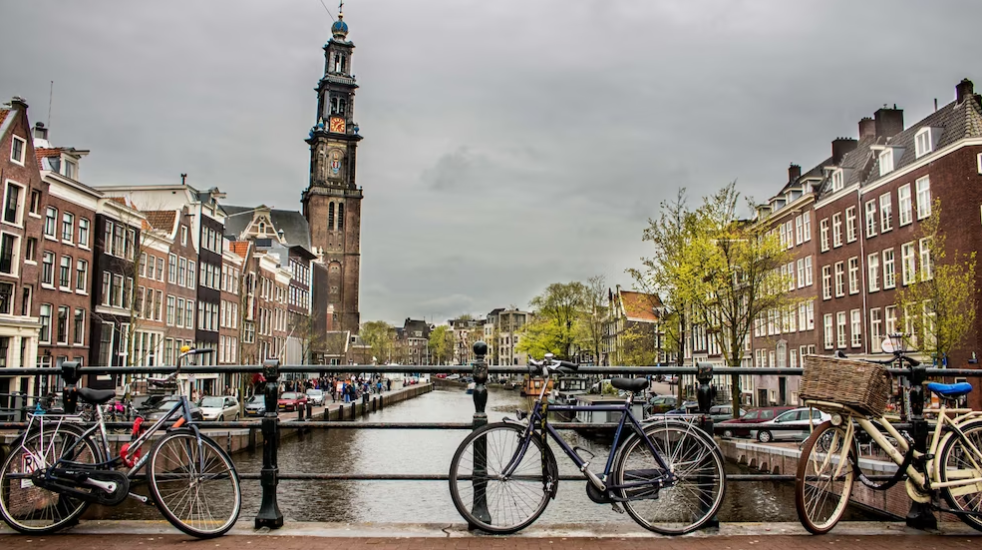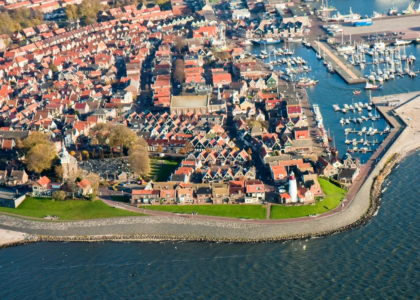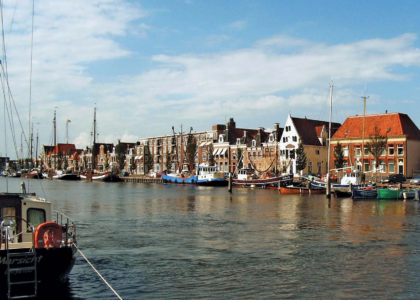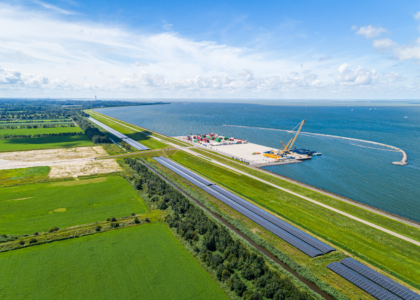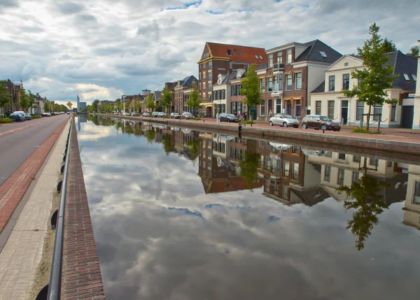When time is limited, choosing the best time to explore the Netherlands becomes crucial. From cooler temperatures to grey, rainy days, weather considerations play a significant role. Fortunately, the Netherlands offers a wealth of activities, regardless of the conditions. Drawing from my years of experience living in the country, I’ll provide all the information you need to select the ideal time for your visit, aligning perfectly with your plans.
While the summer serves as the peak season in the Netherlands, offering warm temperatures ranging from 20 to 30 degrees Celsius and relatively dry weather, it also comes with bustling crowds. Embrace the outdoors during this vibrant time, whether savoring drinks on terraces, strolling through historic towns, or enjoying the beaches and national parks.
If you prefer a more relaxed pace, consider visiting during spring or autumn. These transitional seasons offer a delightful balance, allowing you to immerse yourself in the charm of the Netherlands without the summer crowds. Experience the beauty of blooming flowers or autumnal landscapes while savoring a quieter ambiance.
Navigating the Seasons in the Netherlands
When planning a trip to the Netherlands, understanding the country’s seasons is essential. However, there are a few factors to consider that make the Dutch weather unique. The Netherlands experiences significant weather variability, meaning that summer doesn’t guarantee warmth and winter doesn’t guarantee snow.
Moreover, despite its small size, the country showcases diverse climates and weather patterns. You might encounter snow and ice in one region while finding milder temperatures just a few hours away.
Lastly, the Netherlands is known for its constant breeze, attributed to the abundant wind present throughout the year. Whether it’s winter or summer, a refreshing cool breeze accompanies most days.
Exploring the Netherlands in its Blossoming Glory
When it comes to experiencing the Netherlands at its finest, spring emerges as the optimal season, particularly from March to April.
As the long and chilly winter months draw to a close, a vibrant transformation unfolds across the country. Nature awakens, blanketing the landscape in a kaleidoscope of colors. The temperatures gradually climb, bringing forth pleasant weather accompanied by occasional drizzles amidst ample stretches of clear blue skies. During this time, the outdoor terraces of bars and restaurants come alive, beckoning visitors to savor the warmth of the sun while indulging in refreshing beverages.
Spring in the Netherlands is synonymous with tulips, creating a paradise for flower enthusiasts. In April, the world-renowned Keukenhof bursts into bloom, enchanting visitors with its breathtaking displays of floral beauty. Furthermore, April 27th marks Koningsdag, a spirited nationwide celebration honoring the Dutch royal family. If your travels lead you to Amsterdam during this time, be prepared to immerse yourself in an unforgettable party experience.
By venturing to the Netherlands in spring, you’ll be treated to a sensory feast of vibrant colors, fragrant blossoms, and an air of festivity. Immerse yourself in the stunning beauty of blooming flowers, revel in the convivial atmosphere of outdoor celebrations, and create cherished memories in this enchanting season of renewal.
Visiting the Netherlands in March: Welcoming the Spring
March signals the arrival of spring and the magical tulip season in the Netherlands. With fewer tourists, it’s the perfect time to visit Keukenhof, where breathtaking floral exhibits await. Enjoy the advantage of shorter queues and minimal delays at other attractions, making it an ideal period to explore the country’s beauty.
Weather in the Netherlands in March: Embracing the Transition
In March, the transition from winter to spring brings cooler temperatures to the Netherlands. In Amsterdam, expect highs between 2 and 9 degrees Celsius, accompanied by occasional rain showers. Groningen experiences average highs of around 9 degrees Celsius, with a low of 1 degree, while Maastricht enjoys milder temperatures, with averages of 11 degrees Celsius and a minimum of 3 degrees. It’s a time when you’ll need to dress warmly but can still appreciate the signs of spring emerging.
Visiting the Netherlands in April: Blooming Tulips and Festive Celebrations
In April, the Netherlands experiences warmer temperatures and a rise in tourist numbers, largely driven by the popularity of Keukenhof. Immerse yourself in Dutch culture by celebrating Konings Dag in Amsterdam, a vibrant and authentic event. Don’t miss the enchanting Bloemen corso festival, where flower-covered floats parade through the streets. With longer daylight hours, you’ll have plenty of time to explore and soak up the beauty of the Netherlands in spring.
Weather in the Netherlands in April: Spring Blooms and Milder Showers
In April, Amsterdam enjoys an average daytime temperature of 12 degrees Celsius, with less rainfall compared to March. Groningen experiences temperatures around 13 degrees Celsius, with a low of 3 degrees, while Maastricht sees a high of 14 degrees Celsius and a low of 5 degrees.
Visiting the Netherlands in May: Embracing the Blossoming Beauty
May offers the opportunity to witness the lingering tulips and experience the bustling tourist season. Festivals and outdoor concerts come to life during this vibrant month, adding to the country’s lively atmosphere. However, prices begin to rise as demand increases.
Weather in the Netherlands in May: Warmth and Occasional Showers
May brings warm temperatures to the Netherlands, with an average high of 17 degrees Celsius, making it ideal for city exploration. While there may be occasional light showers, they do not hinder outdoor activities. In Groningen, temperatures average around 17 degrees Celsius, with lows of 7 degrees, while Maastricht enjoys warmer conditions, reaching highs of 19 degrees Celsius with lows of 9 degrees.
The Netherlands in Summer: Festivals and Outdoor Delights
Visiting the Netherlands during the summer high season offers a warm and dry climate that attracts many travelers. While the cities may be crowded, and popular sites have longer queues, it doesn’t diminish the allure of exploring this captivating country. However, keep reading to discover that the “best time” to visit the Netherlands is open to interpretation.
It’s important to note that accommodation tends to be fully booked, and last-minute planning may pose challenges, especially in major cities. Nonetheless, the summer brings a multitude of evening concerts, outdoor festivals, food events, and sports competitions for you to enjoy. Whether lounging on the beach or embarking on outdoor adventures, the Netherlands offers ample opportunities for summer exploration.
Visiting the Netherlands in June: Embrace the Festival Spirit and Extended Daylight
June welcomes a variety of summer festivals and outdoor activities throughout the country. The renowned Holland Festival in Amsterdam, Den Haag, Rotterdam, and Utrecht showcases a captivating blend of music, theatre, dance, and film from both Dutch and international artists. With extended daylight hours, allowing exploration from early morning to late evening, June presents ample time to immerse yourself in the Dutch experience.
Weather in the Netherlands in June: Pleasant Temperatures and Blue Skies
June brings an average temperature of around 19 degrees Celsius in Amsterdam, with cooler nights around 10 degrees Celsius. The skies are generally blue, and rainfall is minimal, making it one of the driest months of the year. Other regions, such as Groningen and Maastricht, experience highs between 20-22 degrees Celsius and lows ranging from 9-12 degrees Celsius.
Visiting the Netherlands in July: Peak Tourist Season and Festive Atmosphere
July marks the peak of tourism in the Netherlands, with both international and local visitors flocking to the cities. As the Dutch divide their summer vacation time across different weeks, locals also indulge in the summer weather, creating a vibrant atmosphere throughout the country. Don’t miss the Rotterdam Summer Festival, an exciting event comparable to Brazil’s Carnival, showcasing the nation’s festive spirit.
Weather in the Netherlands in July: Warm Temperatures and Ideal Exploring Conditions
July boasts an average temperature of around 22 degrees Celsius in Amsterdam, offering ideal conditions for outdoor exploration. Groningen experiences similar highs, while Maastricht sees temperatures ranging from 24-14 degrees Celsius.
Visiting the Netherlands in August: Continued Summer Buzz and Grand Festivities
August, similar to July, maintains a lively and bustling atmosphere, attracting tourists with good weather and captivating events. Noteworthy festivities include the Amsterdam Gay Pride parade, the Amsterdam Canal Festival (Grachtenfestival) featuring classical music at unique venues, and the International Fireworks festival in Scheveningen.
Weather in the Netherlands in August: Warmth and Occasional Showers
August showcases similar weather to July, with average temperatures hovering around 22 degrees Celsius in Amsterdam. Groningen experiences highs of 22 degrees Celsius, while Maastricht’s temperatures range from 23-13 degrees Celsius.
Autumn in the Netherlands: A Tranquil Season of Changing Colors
Visiting the Netherlands in autumn offers a delightful experience as the tourist numbers dwindle, making attractions less crowded and prices more favorable. Though the temperatures begin to cool, and rainfall increases compared to the summer months, there’s a certain charm in witnessing the changing landscapes and shorter days.
Visiting the Netherlands in September: A Month of Charity and Wine Festivities
While September still sees moderate crowds, the overall tourist activity starts to wane. Amsterdam hosts notable events, such as the Amsterdam City Swim, a charity swim along the picturesque canals, and the Amsterdam Wine Festival, celebrating the Northern Hemisphere’s wine harvest. As autumn takes hold, embrace the changing ambiance.
Weather in the Netherlands in September: Mild Days and Cooler Nights
September offers average daytime temperatures of around 18 degrees Celsius, with nighttime temperatures dropping to around 11 degrees Celsius. The month begins with better weather, gradually transitioning to increased rainfall. In Groningen, the average high reaches around 19 degrees Celsius, while Maastricht experiences temperatures between 20 and 11 degrees Celsius.
Visiting the Netherlands in October: Embracing Tranquility and Autumn Splendor
October marks the transition into low season, with fewer tourists and lower prices. While some outdoor events conclude and terraces quiet down, the Netherlands retains its allure. The country showcases the breathtaking beauty of autumn leaves, particularly in the national parks. Additionally, two notable festivals, the Amsterdam Dance Event and the Relief of Leiden, offer vibrant celebrations of music and Dutch traditions.
Weather in the Netherlands in October: Cooler Days and Increasing Rainfall
October brings noticeable weather changes, with evenings and nights feeling more winter-like. Average daytime temperatures in Amsterdam hover around 14 degrees Celsius, remaining comfortable with appropriate clothing. Rainfall increases, so it’s advisable to carry an umbrella. In Groningen, temperatures range from 14 to 6 degrees Celsius, while Maastricht experiences temperatures between 15 and 7 degrees Celsius.
Visiting the Netherlands in November: Tranquil Cities and Festive Beginnings
November presents an opportunity to explore Amsterdam and other tourist cities in a more serene atmosphere. Festivities surrounding Christmas commence with the arrival of Sinterklaas, the Dutch Santa Claus. Marketplaces, activities, and festivals offer delightful experiences, while the Glow Festival in Eindhoven showcases mesmerizing light art and colorful projections.
Weather in the Netherlands in November: Transitioning into Winter
November unveils a wintery feel, with average daily temperatures around 10 degrees Celsius in Amsterdam and Maastricht, and 9 degrees Celsius in Groningen. Nights become colder, requiring suitable winter attire. November is also known for its higher rainfall, so carrying a waterproof layer is advisable.
Exploring Winter Wonders in the Netherlands
Visiting the Netherlands in winter offers a unique experience, with the caveat of chilly temperatures and unpredictable weather. While outdoor activities may be limited, the country offers a multitude of indoor options such as museums, art galleries, restaurants, and cozy cafes to keep you entertained. Though snowfall can occur, it is not guaranteed, making it challenging to plan a trip specifically for that purpose. However, if you happen to witness a snow-covered landscape, the country’s National Parks showcase its beauty at its finest.
For outdoor enthusiasts, skating on frozen rivers and lakes is a thrilling possibility, albeit tightly controlled for safety reasons. The best time for skating varies, dependent on several factors determining ice conditions.
Additionally, it’s important to consider the shorter daylight hours during winter, with the sun setting before 5 pm and rising around 9 am the next morning, resulting in relatively shorter days.
Visiting the Netherlands in December: Embrace the Festive Season
December offers a tranquil and cold ambiance in the Netherlands, with a distinct Christmas vibe throughout the country. Delight in exploring quiet city streets bundled up in warm clothing, or seek solace in indoor attractions like museums. Don’t miss the free fireworks festival in Scheveningen and the numerous Christmas markets scattered across the country.
Weather in the Netherlands in December: Chilly Days and Cozy Indoors
Average high temperatures in Amsterdam and Maastricht range around 7 degrees Celsius, with lows around 2 degrees Celsius. Further north in Groningen, expect an average daily high of 6 degrees Celsius and a low of 1 degree Celsius.
Visiting the Netherlands in January: Embrace Indoor Activities
January and February are the coldest months in the Netherlands, making indoor activities preferable unless you can partake in ice skating. Don your oversized winter jacket and explore the serene surroundings. Engage in the New Year’s Day Dive tradition, where participants dive into the cold ocean before warming up with traditional Dutch pea soup.
Weather in the Netherlands in January: Cold Days and Winter Traditions
January brings chilly temperatures to Amsterdam, with average highs around 4.5 degrees Celsius and most days hovering around 2.5 degrees Celsius. Maastricht experiences slightly warmer conditions, with an average high of 6 degrees Celsius and a low of 1 degree Celsius. In Groningen, anticipate an average high of 5 degrees Celsius and a low of -1 degree Celsius.
Visiting the Netherlands in February: Embrace Longer Days and Exploration
As February marks the drier period of winter, it offers opportunities for outdoor exploration, provided you dress appropriately. With longer daylight hours, more people venture out during this month, adding liveliness to the surroundings.
Weather in the Netherlands in February: Cool Days and Lingering Winter
February temperatures in Amsterdam range between 6 degrees Celsius and 0 degrees Celsius, with the month being relatively dry. Groningen experiences consistent temperatures, with an average high of 5 degrees Celsius and an average low of -1 degree Celsius. Maastricht enjoys slightly warmer conditions, with an average high of 7 degrees Celsius and a low of 1 degree Celsius.
Conclusion
The best time to visit the Netherlands depends on your preferences and what you wish to experience. Summer offers warm temperatures and bustling cities, while spring brings blooming tulips and vibrant festivals. Autumn offers milder weather and fewer crowds, while winter allows for indoor exploration and unique activities like ice skating. Consider your interests and plan your visit accordingly to make the most of your time in the Netherlands.

